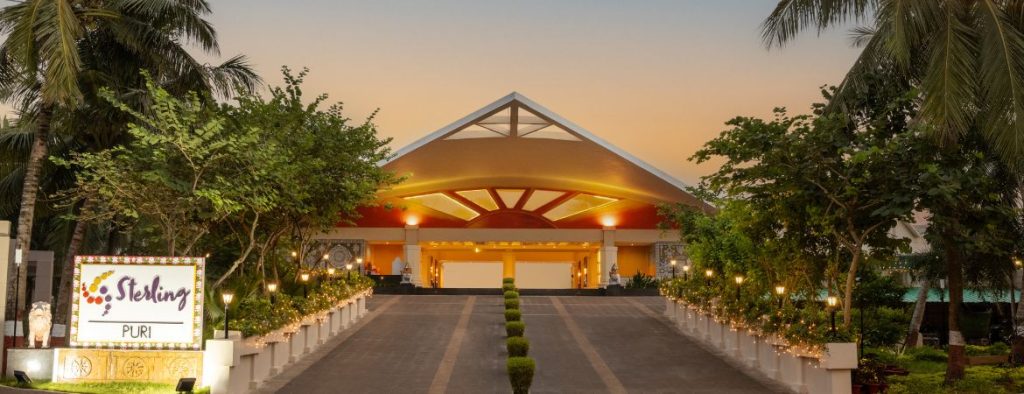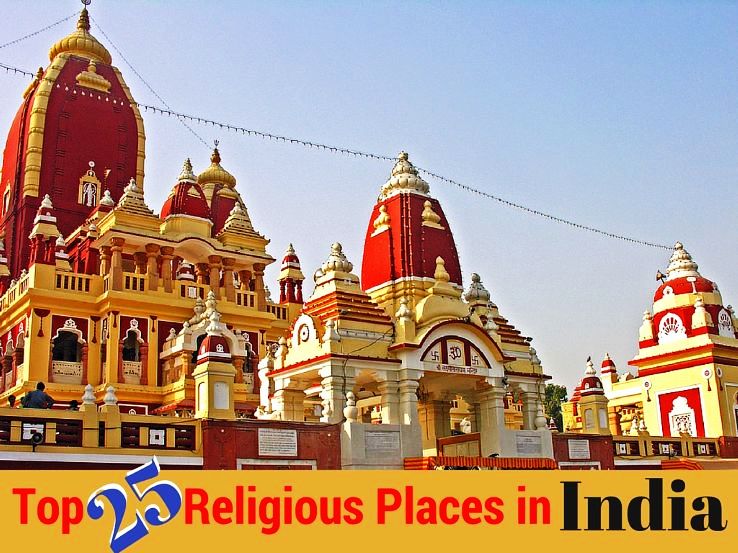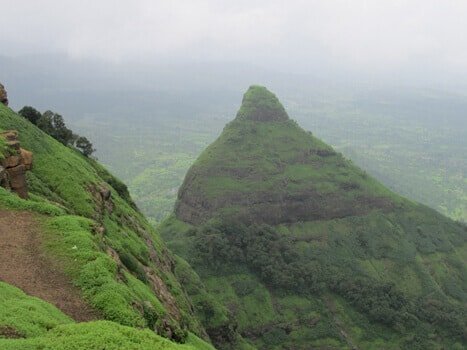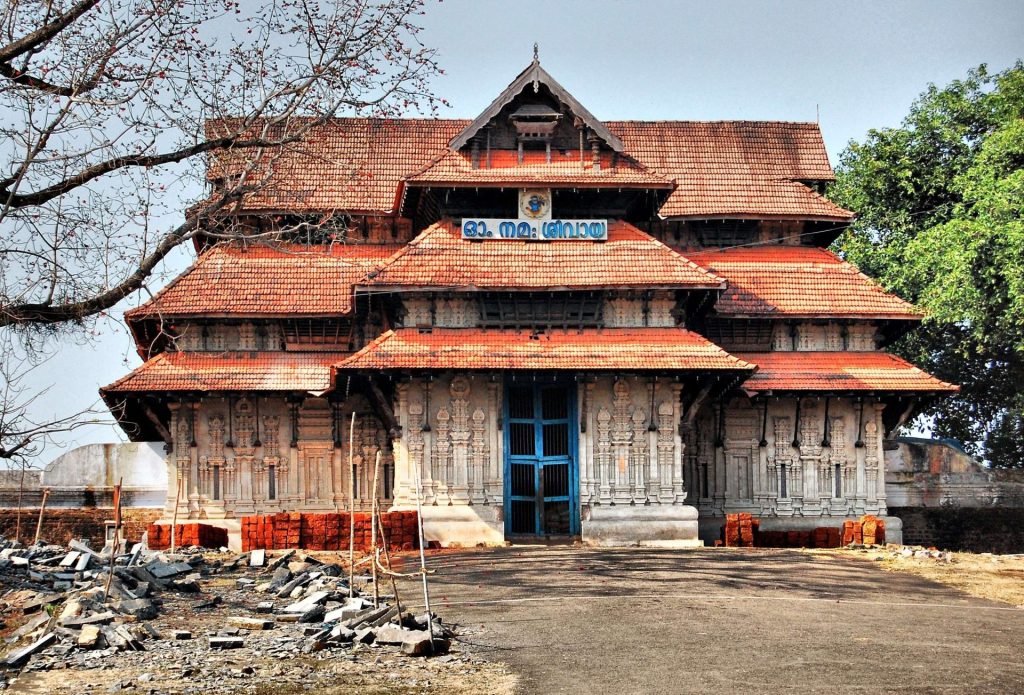Nestled high in the Himalayas, Lhasa is Tibet’s spiritual heart. This ancient city beckons travelers with its rich culture and breathtaking landscapes.
Lhasa, known as the “Place of the Gods,” is the capital of Tibet. It holds deep spiritual significance for Tibetan Buddhists. The city is home to iconic sites like the Potala Palace and Jokhang Temple, drawing pilgrims and tourists alike.
Lhasa’s unique blend of history, religion, and natural beauty creates an unforgettable experience. Wandering its streets, one feels the pulse of centuries-old traditions. The vibrant markets, serene monasteries, and stunning mountain views make Lhasa a dream destination for those seeking adventure and enlightenment. Join us as we explore the wonders of this mystical city, uncovering its secrets and stories.
Introduction To Lhasa
Lhasa, the capital of Tibet, is a city of rich history and culture. Known as the “Land of the Gods,” it offers breathtaking landscapes and spiritual significance. Located high in the Himalayas, it attracts visitors from around the world.
Brief History
Lhasa has been the center of Tibetan Buddhism for centuries. The Potala Palace, built in the 7th century, stands as a symbol of this heritage. The city has seen many historical changes, from ancient times to the present day.
It was once the residence of the Dalai Lama. Today, it remains a place of pilgrimage and spiritual importance. Many temples and monasteries reflect its deep religious roots.
Geographical Significance
Lhasa sits at an altitude of over 3,600 meters. This makes it one of the highest cities in the world. Its location in the Himalayas provides stunning views and a unique climate.
The city is surrounded by mountains and rivers. This gives it a serene and picturesque environment. The geography also plays a role in the city’s culture and lifestyle. The high altitude influences the way of life and traditions of its people.
“`
Credit: www.petmd.com
Potala Palace
Nestled in the heart of Lhasa, Potala Palace stands as a symbol of Tibetan culture. This majestic structure offers stunning views and rich history.
The Potala Palace, a majestic fortress perched atop Marpo Ri (Red Hill) in Lhasa, Tibet, is a sight to behold. This awe-inspiring structure is not just a symbol of Tibetan Buddhism but also a marvel of ancient architecture. Visiting the Potala Palace feels like stepping into a different era, where history and spirituality blend seamlessly. As you walk through its halls, you can’t help but be moved by its grandeur and serenity.Historical Importance
The Potala Palace holds profound historical significance. Originally built in the 7th century, it was expanded in the 17th century by the Fifth Dalai Lama. It has served various purposes over the centuries, including as a winter residence for the Dalai Lamas and as a religious and political hub. When you explore its vast rooms and chapels, you are literally walking through history. The palace houses a vast array of artifacts, ancient scriptures, and beautiful murals that narrate Tibet’s rich past. Each corner tells a story, from the era of its founding to its role in Tibet’s spiritual life. Have you ever wondered what it would be like to live in a place with such a deep historical connection? The Potala Palace allows you to imagine that life, even if just for a moment.Architectural Marvel
Architecturally, the Potala Palace is nothing short of a marvel. It stands 13 stories high and boasts over a thousand rooms. The palace is divided into two parts: the Red Palace, dedicated to religious studies and prayer, and the White Palace, which served as the administrative quarters. The sheer scale is impressive. But it’s the details that truly captivate. The intricate carvings, vibrant murals, and golden roofs reflect the incredible craftsmanship of Tibetan artisans. Each element serves a purpose and adds to the palace’s overall splendor. Imagine standing before the grand entrance, feeling the weight of history as you step inside. It’s not just about seeing; it’s about experiencing the essence of Tibetan culture and architecture firsthand. What makes the Potala Palace even more remarkable is its location. Perched at an altitude of 3,700 meters, it offers breathtaking views of Lhasa and the surrounding mountains. Every glance out of a window or from a balcony presents a new perspective, making the journey to the top well worth the effort. Wouldn’t you love to explore such a unique and historically rich place? The Potala Palace isn’t just a destination; it’s an experience that stays with you long after your visit.Jokhang Temple
Jokhang Temple stands in the heart of Lhasa, Tibet. Built in the 7th century, it is a sacred Buddhist site. Visitors admire its ancient architecture and spiritual ambiance.
Jokhang Temple is the spiritual heart of Lhasa, Tibet’s capital. This ancient temple, built in the 7th century, is one of the most sacred sites in Tibetan Buddhism. It draws thousands of pilgrims and tourists alike, offering a glimpse into the region’s rich cultural and religious heritage.Spiritual Center
The Jokhang Temple is not just an architectural marvel; it’s the spiritual center of Tibetan Buddhism. Step inside, and you’ll feel the serene, almost magical atmosphere. The air is filled with the scent of incense and the soft murmur of prayers. The temple houses a precious statue of Jowo Rinpoche, believed to have been blessed by the Buddha himself. This sacred statue is the focal point of the temple and a major draw for devotees. Walking through the temple, you can see monks in deep meditation, their faces serene and focused. It’s a powerful sight that inspires a sense of peace and reflection. Have you ever felt the urge to find a quiet corner and just breathe, absorbing the tranquility around you?Pilgrimage Site
Jokhang Temple is a significant pilgrimage site for Tibetan Buddhists. Every year, thousands of pilgrims make their way to Lhasa to pay their respects. Some even prostrate themselves on the ground, measuring the distance with their bodies as they inch closer to the temple. Imagine the dedication it takes to undertake such a journey. These pilgrims bring their hopes, prayers, and dreams, seeking blessings and spiritual fulfillment. It’s a humbling experience to witness their devotion. As you walk around the Barkhor Street that encircles the temple, you’ll see pilgrims spinning prayer wheels and chanting mantras. The energy is palpable, a mix of reverence and joy. It’s a place where you can feel the collective faith and commitment of a community. Have you ever considered what drives people to go on pilgrimages? Is it faith, tradition, or a search for something deeper? Visiting Jokhang Temple might just give you some answers. Whether you’re a spiritual seeker or simply curious, Jokhang Temple offers a unique and enriching experience. It’s a place where history, culture, and spirituality come together, inviting you to explore and reflect. So, why not make your next trip to Lhasa a journey of discovery at Jokhang Temple?
Credit: www.tripadvisor.com
Barkhor Street
Barkhor Street, located in Lhasa, offers a vibrant blend of culture and history. This bustling market area surrounds the Jokhang Temple, attracting many visitors.
Barkhor Street is one of the most iconic and vibrant areas in Lhasa, Tibet. This bustling market street encircles the Jokhang Temple and is a magnet for both tourists and locals. It’s a place where tradition meets modernity, and every corner is filled with history, culture, and commerce. Let’s dive into the wonders of Barkhor Street with a focus on its shopping paradise and rich cultural experience.Shopping Paradise
When you step onto Barkhor Street, you’ll find yourself in a shopper’s haven. The street is lined with countless stalls and shops offering a myriad of unique items. From traditional Tibetan handicrafts to contemporary souvenirs, there’s something for everyone.
One of the highlights is the array of handcrafted jewelry. You can find beautiful pieces made of turquoise, coral, and silver. These aren’t just accessories; they’re pieces of Tibetan culture you can wear.
Textiles also dominate the scene. Colorful prayer flags flutter in the wind, and you can purchase them to bring a piece of Tibetan spirituality home. Traditional Tibetan robes and scarves, often made from yak wool, are not only warm but also carry intricate designs that tell stories of the region.
Do you love art? Barkhor Street is a treasure trove of Thangka paintings. These religious scroll paintings depict Buddhist deities and scenes. They’re not just decorations; they’re spiritual tools used for meditation and teaching.
And let’s not forget the incense. The aromatic blends sold here are unlike anything you’ll find elsewhere. Made from natural herbs and spices, they provide a sensory experience that transports you to the heart of Tibetan monasteries.
Cultural Experience
Shopping is just one aspect of Barkhor Street; it’s also a place rich in culture. As you wander through the narrow lanes, you’ll notice the pilgrims walking clockwise around the Jokhang Temple. This ancient practice is an integral part of Tibetan Buddhism, and witnessing it is a profound experience.
Engage with the locals. They’re often eager to share stories and explain the significance of the items they sell. Their hospitality adds a personal touch to your visit and provides deeper insight into their way of life.
If you’re lucky, you might encounter a traditional Tibetan dance performance. These impromptu shows are mesmerizing, with performers dressed in elaborate costumes. The music, the rhythm, and the energy of the dance are infectious.
Have you ever tried Tibetan food? Barkhor Street is dotted with small eateries offering local delicacies. From butter tea to momos (Tibetan dumplings), the flavors are unique and unforgettable. Don’t miss the chance to try tsampa, a staple food made from barley flour.
As you explore, take a moment to observe the architecture. The buildings here are a blend of Tibetan and Chinese styles, with intricately carved wooden windows and vibrant colors. Each structure has its own story, reflecting the rich history of the region.
Visiting Barkhor Street is not just a shopping trip; it’s a journey through time and culture. Every step you take, every person you meet, and every item you see adds to the tapestry of your experience. So, are you ready to immerse yourself in the wonders of Barkhor Street?
Norbulingka
Among the many treasures of Lhasa, Norbulingka stands out as a radiant gem. Known as the ‘Jewel Park,’ this historical palace and garden complex is a testament to the grandeur and tranquility that Tibet has to offer. Originally constructed in the 18th century, Norbulingka served as the traditional summer residence of the Dalai Lamas. Exploring this magnificent site allows you to journey through both history and nature, offering a unique glimpse into Tibetan culture and heritage.
Summer Palace
The Summer Palace at Norbulingka is not just a palace; it’s a piece of living history. As you walk through its grand halls, you can almost hear the whispers of the past. The architecture, a blend of Tibetan tradition and subtle modern influences, is mesmerizing.
Imagine standing in the same rooms where the Dalai Lamas once planned their strategies and sought solace from their duties. The murals and artifacts tell stories that textbooks often miss, making history come alive. You can see the throne room, the private quarters, and even the reception areas where important dignitaries were welcomed.
Every corner of the Summer Palace invites you to reflect on the lives that once filled these spaces. What would it have been like to be a guest here? How did the Dalai Lamas balance their spiritual and administrative roles? These questions add layers to your exploration, making the visit both intellectually and emotionally enriching.
Garden Retreat
Norbulingka’s gardens are a true retreat for the soul. Spread over 36 hectares, these gardens are a perfect escape from the hustle and bustle of modern life. Think of it as nature’s embrace, offering peace and rejuvenation.
Walking through the lush greenery, you’ll find beautifully manicured lawns, vibrant flower beds, and serene ponds. Each element is thoughtfully placed to create a harmonious environment. The gardens are dotted with traditional Tibetan pavilions, where you can rest and soak in the beauty around you.
One of my favorite moments was finding a secluded spot by a pond, where I sat and listened to the gentle rustling of leaves and the soft chirping of birds. It was a moment of pure serenity, a chance to disconnect and reflect.
Have you ever felt the need to just sit and be? To let nature heal your mind and spirit? Norbulingka’s gardens offer that rare opportunity. Next time you find yourself in Lhasa, make sure to spend some time here. Your mind, body, and soul will thank you.
Norbulingka is more than just a historical site; it’s a living, breathing sanctuary. Whether you are fascinated by history or seeking a peaceful retreat, this jewel of Lhasa has something to offer everyone. What will you discover on your visit?
Sera Monastery
Lhasa, the capital of Tibet, is home to many historic sites. One of its most renowned landmarks is Sera Monastery. Nestled at the foot of Tatipu Hill, it is one of the three great Gelug university monasteries of Tibet.
Historical Background
Sera Monastery was founded in 1419 by Jamchen Chojey, a disciple of Tsongkhapa. The monastery played a key role in spreading the teachings of Tsongkhapa. It housed thousands of monks at its peak.
The name “Sera” means “wild rose” in Tibetan. It is said that the site was covered with wild roses during its construction. The monastery has three main colleges: Sera Je, Sera Me, and Ngagpa College.
Sera Monastery survived the turmoil of the Cultural Revolution. Today, it remains a significant religious and cultural site in Tibet.
Monastic Debates
One of the most unique aspects of Sera Monastery is its monastic debates. These debates take place in the monastery’s courtyard. Monks engage in lively debates on Buddhist philosophy and theology.
The debates are a form of intellectual training for the monks. They help deepen their understanding of Buddhist teachings. The debates involve a lot of hand clapping and expressive gestures.
Visitors can observe these debates during the afternoon. It provides a fascinating glimpse into Tibetan Buddhist practices. The energy and passion of the monks are truly captivating.
Local Cuisine
Lhasa’s local cuisine offers a delightful mix of Tibetan flavors. Traditional dishes like momos and thukpa are hearty and satisfying. Yak meat and butter tea are also popular staples.
Lhasa, the heart of Tibet, is not just a spiritual haven but also a culinary treasure trove. The city’s local cuisine tells a story of tradition, culture, and the unique high-altitude environment. From hearty stews to delicate dumplings, Lhasa offers a delightful array of flavors that will tantalize your taste buds and leave you craving more.Traditional Dishes
When you visit Lhasa, you must try the traditional dishes that locals have perfected over generations. One such dish is Tsampa, a staple made from roasted barley flour. It’s often mixed with tea and butter, creating a comforting and energizing meal that’s perfect for the high-altitude climate. Another must-try is Momos. These Tibetan dumplings are filled with meat or vegetables and can be either steamed or fried. They are often served with a spicy dipping sauce that adds a delightful kick. I remember my first bite of a steamed momo; the juicy filling and the soft dough were a match made in culinary heaven. Thukpa, a hearty noodle soup, is another favorite. It’s made with hand-pulled noodles, vegetables, and meat, simmered in a savory broth. This dish is especially comforting during the colder months and is sure to warm your soul.Must-try Restaurants
Finding the right place to enjoy these traditional dishes can elevate your experience in Lhasa. Here are a few restaurants you shouldn’t miss:- Tibet Kitchen: Located in the heart of Lhasa, Tibet Kitchen offers an authentic experience with its wide range of traditional dishes. The ambiance is cozy, and the staff is incredibly welcoming. Don’t miss their momos; they are simply the best in town.
- Dunya Restaurant: If you’re looking for a mix of Tibetan and international cuisine, Dunya is the place to be. Their Thukpa is highly recommended, and the restaurant has a lovely rooftop seating area where you can enjoy stunning views of the city.
- House of Shambhala: This restaurant is part of a boutique hotel and offers a unique dining experience. The interior is adorned with traditional Tibetan decor, and their Tsampa is a must-try. The serene atmosphere makes it perfect for a relaxing meal.
Travel Tips
Traveling to Lhasa, the capital of Tibet, is a unique experience that promises to leave you in awe. From the majestic Potala Palace to the serene Jokhang Temple, every corner of this city is steeped in history and culture. To make the most of your trip, it’s essential to plan well. Here are some travel tips to help you navigate Lhasa like a pro.
Best Time To Visit
The best time to visit Lhasa is from May to October. During these months, the weather is pleasant, and you can enjoy the stunning landscapes without the harsh winter chill. July and August are peak tourist seasons, so if you prefer fewer crowds, consider visiting in May, June, or September.
However, if you’re someone who loves festivals, try to plan your trip around the Tibetan New Year, Losar, which usually falls in February or March. Another great time is during the Shoton Festival in August, known for its traditional opera performances and massive Buddha Thangka display at Drepung Monastery.
Transportation Guide
Getting around Lhasa is relatively easy, thanks to a variety of transportation options. Here’s a quick guide to help you out:
- Walking: The city is quite walkable, especially around the old town area. You’ll find most attractions are within walking distance.
- Public Buses: Lhasa has an efficient bus system. Buses are cheap and can take you to most tourist spots. Just keep some small change handy for the fare.
- Taxis: Taxis are readily available, and fares are reasonable. Always insist on using the meter to avoid overcharging.
- Bicycles: Renting a bike can be a fun way to explore the city at your own pace. There are several bike rental shops in Lhasa.
- Private Cars: If you prefer more comfort, consider hiring a private car with a driver. This is especially useful if you plan to visit places outside the city.
Did you know that you can take a train to Lhasa from major cities in China? The Qinghai-Tibet Railway offers breathtaking views of the Tibetan Plateau. It’s an experience you shouldn’t miss if you have the time.
So, are you ready to explore the wonders of Lhasa? Remember, the key to an unforgettable trip lies in the details. Plan well, stay curious, and let the magic of Lhasa unfold before you.

Credit: www.lonelyplanet.com
Frequently Asked Questions
Why Is Lhasa Known As A Forbidden City?
Lhasa is known as a forbidden city due to its historical inaccessibility to outsiders. Travel restrictions and remote location limited foreign access.
Is Lhasa A Friendly Dog?
Lhasa Apsos can be friendly but are often independent and reserved with strangers. They are loyal to their families. Proper socialization helps them become more sociable.
What Is Lhasa Famous For?
Lhasa is famous for its rich Tibetan culture, the Potala Palace, and Jokhang Temple. It is a spiritual center of Tibetan Buddhism.
Whose Capital Is Lhasa?
Lhasa is the capital of Tibet. It is renowned for its historic sites and Tibetan Buddhist culture.
Conclusion
Lhasa offers a unique blend of culture and history. Its scenic beauty captivates visitors. Local cuisine provides a delightful taste experience. Friendly locals make the city welcoming. Visiting Lhasa creates unforgettable memories. The city’s charm is truly incomparable. Plan your trip to explore this amazing destination.
Discover the wonders of Lhasa today. You won’t regret it. Enjoy your journey!
{ “@context”: “https://schema.org”, “@type”: “FAQPage”, “mainEntity”: [ { “@type”: “Question”, “name”: “Why is Lhasa known as a forbidden city?”, “acceptedAnswer”: { “@type”: “Answer”, “text”: “Lhasa is known as a forbidden city due to its historical inaccessibility to outsiders. Travel restrictions and remote location limited foreign access.” } } , { “@type”: “Question”, “name”: “Is Lhasa a friendly dog?”, “acceptedAnswer”: { “@type”: “Answer”, “text”: “Lhasa Apsos can be friendly but are often independent and reserved with strangers. They are loyal to their families. Proper socialization helps them become more sociable.” } } , { “@type”: “Question”, “name”: “What is Lhasa famous for?”, “acceptedAnswer”: { “@type”: “Answer”, “text”: “Lhasa is famous for its rich Tibetan culture, the Potala Palace, and Jokhang Temple. It is a spiritual center of Tibetan Buddhism.” } } , { “@type”: “Question”, “name”: “Whose capital is Lhasa?”, “acceptedAnswer”: { “@type”: “Answer”, “text”: “Lhasa is the capital of Tibet. It is renowned for its historic sites and Tibetan Buddhist culture.” } } ] }




